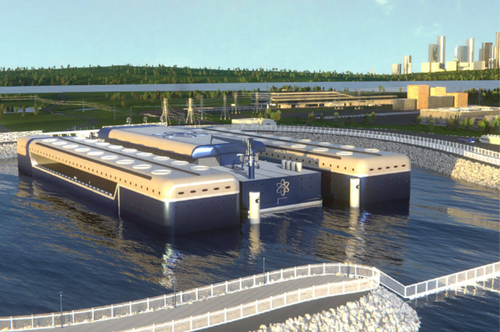
Nuclear power generation is an integral part of the electrical grid landscape, and it's a critical pillar in decarbonizing the energy sector to achieve net-zero greenhouse gases.
The evolution of nuclear power generation from traditional, giant, light-water reactors to advanced light-water small modular nuclear reactors (SMRs) could be a reality by the end of the decade.
The US Nuclear Regulatory Commission (NRC) recently certified a design for NuScale Power's SMR. The certification allows utilities to use the design when applying for licenses to build a nuclear power plant. The rule becomes effective next month.
"The rule takes effects February 21, 2023 and equips the nation with a new clean power source to help drive down emissions across the country," NRC wrote in a statement.
This is the first design for an SMR to be certified in the US. The other six designs are for large traditional reactors.
"The design is an advanced light-water SMR with each power module capable of generating 50 megawatts of emissions-free electricity," NRC continued.
President Biden has prioritized advancing nuclear technologies to power the grid of tomorrow. His administration has also announced funding to extend the lifespans of nuclear power plants nationwide.
Recall we have stated if President Biden wants to obtain a carbon-free future, his ability to do so will be through the expansion of nuclear power generation, not unreliable solar and wind energy that fluctuates with the weather.
NuScale's small design, about a third of the size of a traditional reactor, allows it to be built almost anywhere.
There's even a floating version of the reactor built on a barge that can be towed to grids that need to expand power capacity quickly.
The DOE and NuScale will build a demonstration power plant with SMRs in 2025, with the first power module operating by 2029.
What's become very evident is the US' thirst for boosting nuclear capacity by adding SMRs to the grid to realize a carbon-free future. To do this, the US will also need to kick its reliance on nuclear fuel from Russia, indicating a need to increase domestic mining supply chains and enrichment facilities.
Nuclear power generation is an integral part of the electrical grid landscape, and it’s a critical pillar in decarbonizing the energy sector to achieve net-zero greenhouse gases.
The evolution of nuclear power generation from traditional, giant, light-water reactors to advanced light-water small modular nuclear reactors (SMRs) could be a reality by the end of the decade.
The US Nuclear Regulatory Commission (NRC) recently certified a design for NuScale Power’s SMR. The certification allows utilities to use the design when applying for licenses to build a nuclear power plant. The rule becomes effective next month.
“The rule takes effects February 21, 2023 and equips the nation with a new clean power source to help drive down emissions across the country,” NRC wrote in a statement.
This is the first design for an SMR to be certified in the US. The other six designs are for large traditional reactors.
“The design is an advanced light-water SMR with each power module capable of generating 50 megawatts of emissions-free electricity,” NRC continued.
President Biden has prioritized advancing nuclear technologies to power the grid of tomorrow. His administration has also announced funding to extend the lifespans of nuclear power plants nationwide.
Recall we have stated if President Biden wants to obtain a carbon-free future, his ability to do so will be through the expansion of nuclear power generation, not unreliable solar and wind energy that fluctuates with the weather.
NuScale’s small design, about a third of the size of a traditional reactor, allows it to be built almost anywhere.
There’s even a floating version of the reactor built on a barge that can be towed to grids that need to expand power capacity quickly.
The DOE and NuScale will build a demonstration power plant with SMRs in 2025, with the first power module operating by 2029.
What’s become very evident is the US’ thirst for boosting nuclear capacity by adding SMRs to the grid to realize a carbon-free future. To do this, the US will also need to kick its reliance on nuclear fuel from Russia, indicating a need to increase domestic mining supply chains and enrichment facilities.
Loading…





